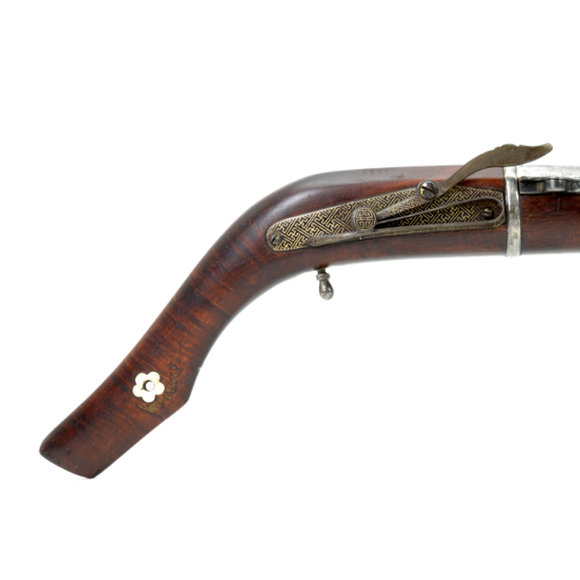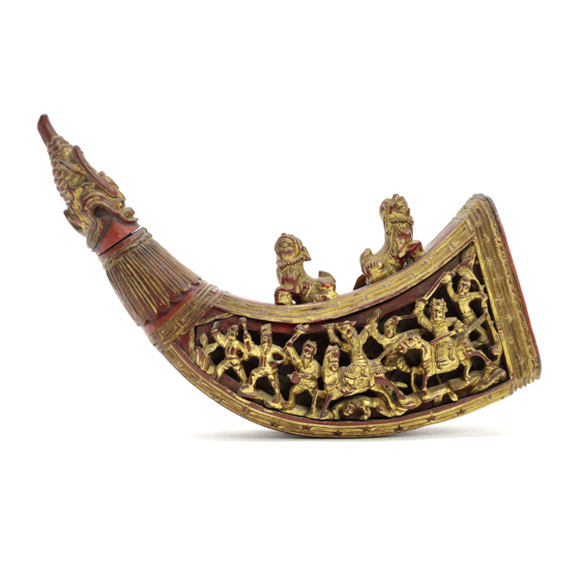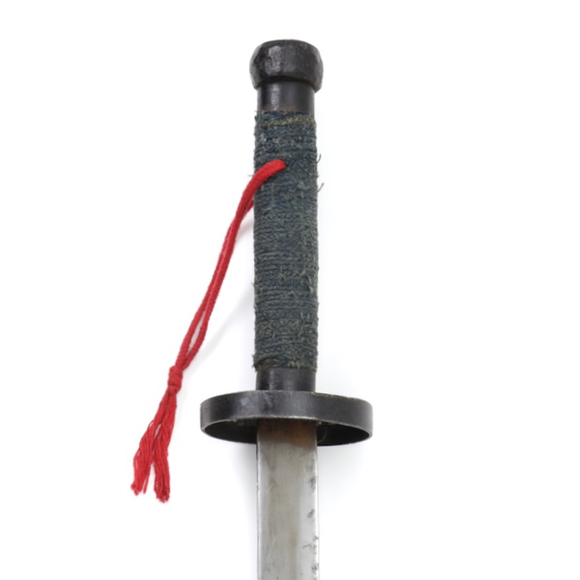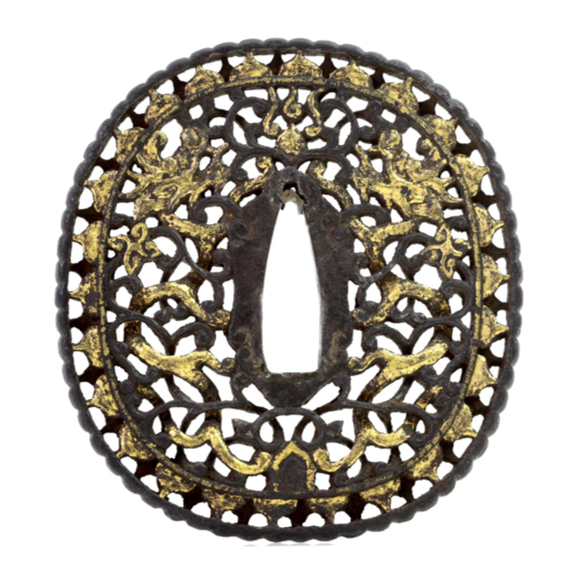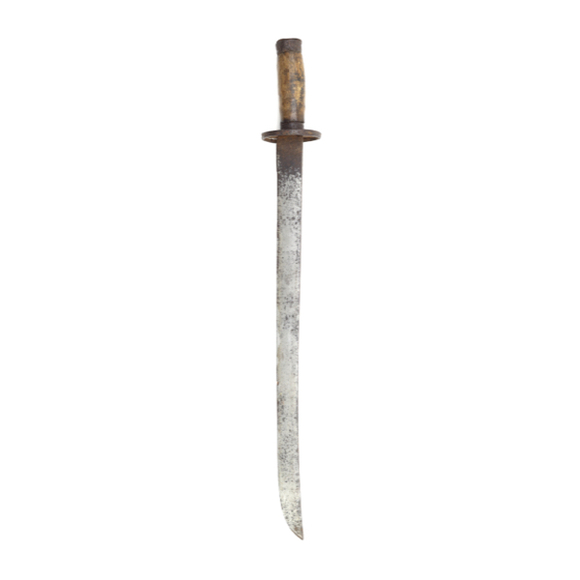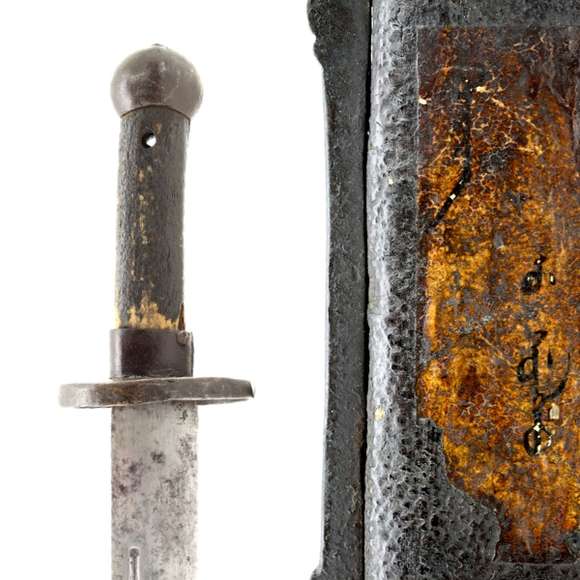Language: Mandarin Chinese
Source: Period dictionary
Description
Huà huà pí (畫樺皮) literally means "painted birch bark". It covered the backside of the working limbs of composite bows.
Birch bark is a natural membrane that helps protect and regulate the moist content of the sinew backed limbs of a composite bow. It was usually decorated by painting it, often in addition to patchwork done with painted birch bark, paper or cherry bark.
During the Qing dynasty, bow limbs often showed patterns of stylized tiger stripes.

The painted birch bark covering of the back of the limbs on a Qing dynasty bow.
They are an abstract rendition of tiger stripes.
Sold by Mandarin Mansion in 2018.

A repetitive stylized tiger stripe pattern. This style was typical on bows of the middle decades of the 19th century.
Private collection.

Painted birch bark decoration on a folding bow of the late 19th century.
Sold by Mandarin Mansion in 2020.
Other terms
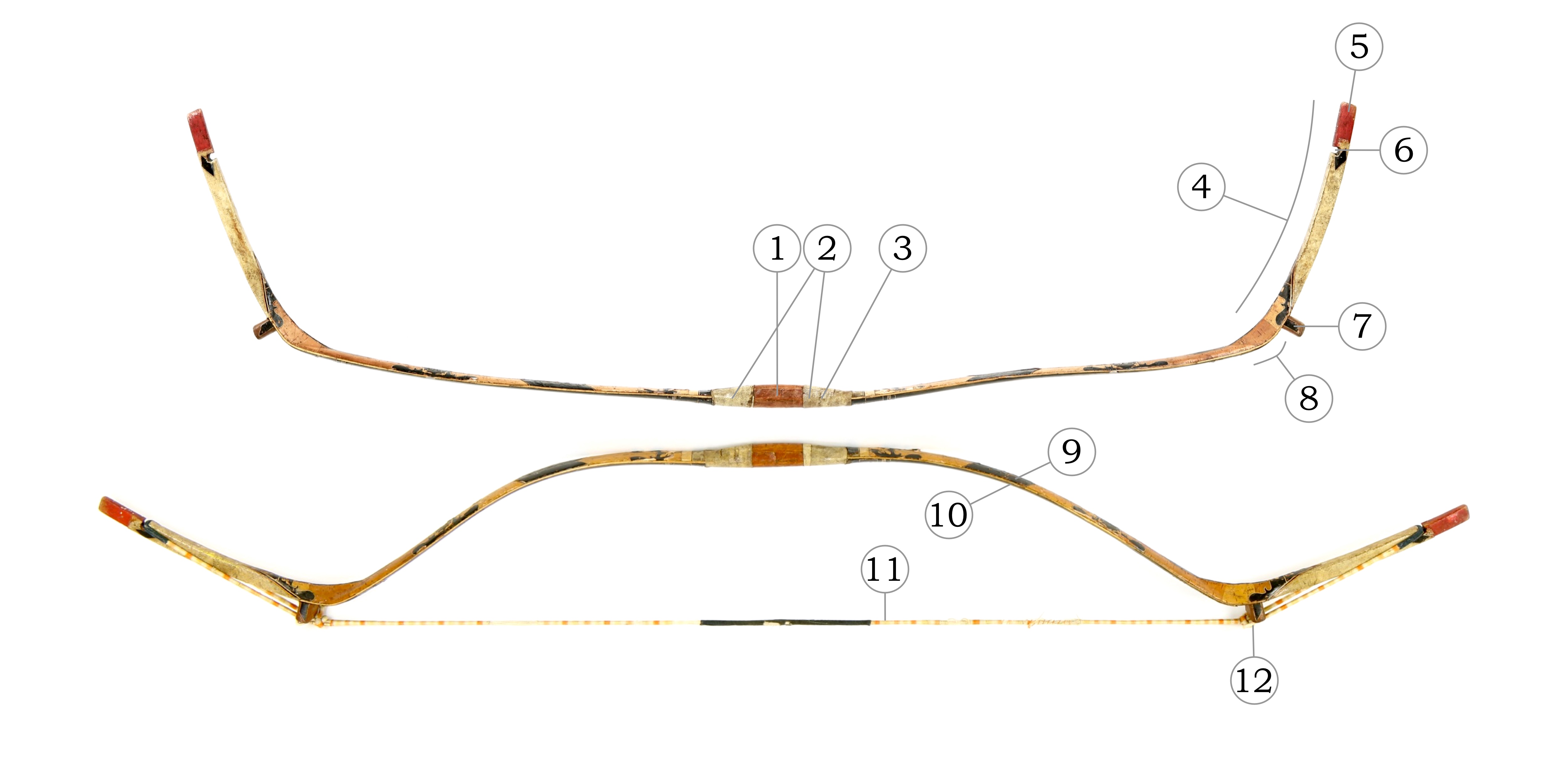
|
# |
English |
Chinese |
Pinyin transliteration |
| Bow | 弓 | Gōng | |
| 1. | Bow grip | 弓弝 | Gōngbà |
| 2. | Sides of bow grip | 弓弝膀子 | Gōng bà bǎngzi |
| 3. | Arrow slipping spot | 箭溜子 | Jiàn liūzi |
| 4. | Bow ear | 弓弰 | Gōng shāo |
| 5. | Tip | 弰頭 | Shāo tóu |
| 6. | String notch | 扣子 | Kòuzi |
| 7. | String bridge | 弓墊子 | Gōng diànzi |
| 8. | Bow knee (lit. "brain") | 弓腦 | Gōng nǎo |
| 9. | Painted birch bark | 畫樺皮 | Huà huà pí |
| 10. | Bow face | 弓面 | Gōng miàn |
| 11. | Bowstring | 弓弦 | Gōng xián |
| 12. | Bowstring knot | 弦挌搭 | Xián gé dā |
Notes
All terms are from the Wuti Qingwen Jian (五體清文鑑)or "Five Languages Mirror", a Qing imperial dictionary in Manchu, Mongolian, Uighur, Tibetan and Chinese of circa 1790. Commissioned by and published under the Qianlong emperor.

